Results 9,481 to 9,490 of 12096
Thread: Anandtech News
-
05-21-19, 08:26 PM #9481
Anandtech: A New Approach To Updates: Windows 10 May 2019 Update Available Today
For those eager to get the latest and greatest production build of Windows 10; good news. For those who would rather watch from the sidelines until the kinks are worked out; good news. Today Microsoft has officially launched the spring 2019 update for Windows 10, affectionately called the Windows 10 May 2019 Update. There’s a few new features under the hood, but the biggest change to Windows 10 this time is not a new feature you may or may not use, but instead a new approach to updates, and after almost four years of users not being in control, Microsoft has put the control back in the hands of the people using their OS. Finally.
I’m not going to pine on about days gone past, but one of the biggest changes to Windows 10 when it launched was that the update system was going to be better. Improved. More reliable. Except it wasn’t. Some changes, such as the cumulative updates, have been a huge relief for people setting up new machines, since they no longer needed to update their computer for several days. An update comes every month which should have everything you need to get you to current in one batch. This was a win for end users. However, Windows 10 also brought about a new idea called feature updates, where occasionally, a new version of Windows would come down the same pipe as a normal update. Assuming everything was well tested, the update should install with little fanfare, but as we know that’s not been the case. Windows is on far too many machines to make any update easy, and Microsoft’s feedback mechanism for update issues was not being monitored as it needed to, which lead to multiple feature updates with enough major problems that even the last update from October is only now being pushed out to some machines.
So today we get Windows 10 1903, or the May 2019 Update, and home users will finally get an option to pause updates even if they are using Windows 10 Home. It’s a small step, but coupled with a very measured rollout, hopefully this will be the smooth update Microsoft has been craving for the last couple of years. For those looking for further transparency, Microsoft has a Windows release health dashboard, which shows the status of current known issues, letting you know ahead of time if you may have an incompatible piece of software or hardware.
There are of course new features as well, since this is in fact a feature update for Windows 10. There’s a new light theme, providing a refreshing look for Windows 10 which pairs nicely with the dark mode that arrived a couple of versions ago. Cortana is no longer part of the search bar, and now lives on its own app icon on the task bar. More default applications can now be removed.
There’s more complex features as well, such as Windows Sandbox, which allows you to run an application in a virtualized container for testing without it having access to the system files. Think of it like Hyper-V, but without the complexity. It’s not as powerful as Hyper-V, but it’s also much easier to set up and use.
There’s a few other features as well that we’ll go through in a more comprehensive article after we’ve had time to dig through some of the new abilities. That being said, updates are now offering fewer and fewer big changes, which makes sense due to the maturity of Windows 10 now. Plus, with the lack of stability, it makes sense to offer less user-facing features that are more stable, rather than continue to offer a multitude of new things that may or may not get used.
For those looking to get a jump-start on the upgrade process, Windows 10 May 2019 Update is currently rollout out via Windows Update where you can just check for updates, and you’ll receive it if your computer doesn’t have any blocking hardware or software. Microsoft is taking a very measured and cautious approach here, which is the right thing to do. For those that don’t want to wait for Windows Update, you can always check out the Windows 10 Download page to get the update right now.
Source: Windows Blog
More...
-
05-22-19, 09:54 AM #9482
Anandtech: Zoom Zoom: Testing 10x Hybrid Zoom in Dublin with the Huawei P30 Pro and O
One of the main issues facing the smartphone industry is stagnation. From generation to generation, we see the main smartphone manufacturers gunning for differentiation, and we’ve seen features such as multiple cameras, all-screen displays, and in-screen fingerprint readers become widespread among the high-end devices in the past couple of years. One of the most recent features available on a couple of new smartphones is a strong zoom, up to 5x/6x optical zoom paired with software to offer a 10x ‘lossless hybrid’ zoom and up to a 50x digital zoom. We recently got hold of the Huawei P30 Pro and the Oppo Reno 10x Zoom for a quick showdown, given that these are the first devices to both offer this new feature.
More...
-
05-22-19, 09:54 AM #9483
Anandtech: Report: Arm Suspends Business with Huawei - Future Chip Development In Jeo
In the latest event in the quickly moving saga that is Huawei’s technology export blacklisting by the United States Government, the BBC has published a report this morning claiming that IP vendor Arm has “suspend business” with Huawei and its subsidiaries. If this is correct, then it would represent a massive setback for Huawei’s hardware development efforts, as the company and its HiSilicon chip design subsidiary rely heavily on Arm’s IP for its products.
According to the BBC News report, Arm has almost entirely severed ties with Huawei, with the company instructing employees that they are not to “provide support, delivery technology (whether software, code, or other updates), engage in technical discussions, or otherwise discuss technical matters with Huawei, HiSilicon or any of the other named entities”.
Huawei, for its part, is one of Arm’s top customers and a close ecosystem partner, shipping countless numbers of chips and devices with Arm IP in it every year. The company is a leading-edge implementer of new Arm CPU and GPU IP, and in the last few years has been the first vendor to ship chips using Arm’s latest Cortex-A series CPUs. Furthermore, via HiSilicon, Huawei is also an ARMv8 CPU architectural licensee. As a result of their close workings with Arm, Huawei has built up a significant amount of their product portfolio around Arm technologies, including their Kirin consumer SoCs and Kunpeng server SoCs. So being cut off from Arm would touch virtually every aspect of Huawei’s hardware business, from smartphones to networking gear.
Meanwhile Arm, for its part, is headquartered in the UK and not the US. However as a multi-national company, Arm develops its technology around the world, including its major design centers in San Jose and Austin. As a result, according to the report, Arm has deemed that its designs contain “US origin technology”, and as a result make it subject to the US technology blacklist.
What’s less clear, however, is just how much Huawei will be impacted by Arm’s suspension and how soon. The BBC’s report indicates that Arm’s suspension only involves further technology transfers and development, and that the company can continue to manufacture chips based on technology they already have – including chips that have finished development and are coming on the market later this year. In which case Huawei wouldn’t immediately feel the impact of the suspension, as the long lead time on chip design means it would be a bit until that development pipeline runs dry. However it’s not as clear what this means for HiSilicon’s Arm architecture license as a whole, and if and how that could be rescinded.
For now, the full ramifications for Huawei are going to depend heavily on whether they remain on the US technology blacklist, or if at some point they are removed or otherwise granted a waiver. If Huawei is reinstated, then the company can continue development of their current product pipeline – though the company would want to take a hard look at moving away from US-sourced IP anyhow to prevent a repeat of this event. Otherwise if they remain cut-off from Arm, then Huawei is without a doubt going to be left in a tough spot and will be forced to go it alone. This is where the nuances of their Arm architecture license come into play – if the company can legally develop their own hardware using the Arm ISA – but either way Huawei would need to increasingly develop its own IP and license other parts from non-US sources.
Ultimately it’s been clear from the start that the US technology blacklisting would have severe repercussions for Huawei. However of all of Huawei’s US-bound technology partners, there is arguably none more important than Arm. So losing access to Arm’s IP could very well cripple the company.
In the meantime, we’ve reached out to Huawei and Arm for further comment.
More...
-
05-22-19, 01:01 PM #9484
Anandtech: Apple Refreshes 13 & 15-Inch MacBook Pros for 2019: Adds 8-Core Intel CPUs
Apple on Tuesday introduced refreshed versions of its MacBook Pro 13-inch and 15-inch laptops, updating the machines to use Intel's latest 8th and 9th Gen Core processors, as well a further refinement to the company's butterfly keyboard switches. In particular, Apple is now offering Intel's 8 core processors as an upgrade option with the 15-inch MacBook Pro, marking the second time in a year that Apple has added more cores to this laptop, with Apple touting that the newest model is up to 40 percent faster than its predecessor. Otherwise, these new 2019 models are pure spec-bumps over the 2018 models, offering faster CPUs but are otherwise unchanged from their predecessors as far as displays, dimensions, and other specifications are concerned.
This refresh comes surprisingly swiftly for Apple, who over the last few years has taken a slower track in refreshing its laptops. Intel only announced their 45 Watt 9th Gen Core mobile parts a month ago, so this is relatively quick for Apple. Meanwhile the 13-inch model doesn't get quite the same boost here, but its updated 8th Gen Core processor options are faster than the models it replaces.
Along with the new CPUs the refreshed laptops are also introducing a further update to Apple's butterfly keyboard switches, which have gone through a few generations of tweaks now in response to reliability issues. According to The Verge, while Apple isn't calling this a fourth-generation keyboard, the company has none the less using a new material in part of the butterfly mechanism to further reduce issues with the keyboard. Despite Apple's efforts thus far, issues have persisted with the butterfly switches, so time will tell how the latest iteration does.
Otherwise, as noted above the base specifications for the other aspects of the MacBook Pros haven't changed. In the case of the 15-inch mode, this means a 15.4-inch display supporting a 2880x1800 resolution (along with DCI-P3 color gamut as well as True Tone technology), accompanied by AMD’s Radeon Pro 555X/560X-series or Radeon Pro Vega GPUs, with the top-of-the-range model configurable with the Radeon Pro Vega 16 or 20 chip. Meanwhile, DRAM and SSD options include 16 GB of RAM and a 256 GB SSD on the base model, with 32 GB of DDR4 RAM and SSDs ranging from 512 GB to 4 TB available as upgrades.
Despite the fact that Apple now offers more powerful hardware with its 2019 15-inch MacBook Pro, the company still outfits the machines with an 83.6 Wh battery that is rated for up to 10 hours of operation. Of course, real-world will depend on usage model, display brightness, and so on.MacBook Pro 15-Inch 2019 Models Model 6-Core 8-Core CPU 2.6 GHz
Core i7-9750H
6 CPU Cores
(Coffee Lake)
Configurable to Core i9-9980HK2.3 GHz
Core i7-9880H
8 CPU Cores
(Coffee Lake)
Configurable to Core i9-9980HKGPU Intel UHD Graphics 630 + AMD Radeon Pro 555X (4GB)
Configurable to Radeon Pro 560X with 4 GB of GDDR5 memoryIntel UHD Graphics 630 + AMD Radeon Pro 555X (4GB)
Configurable to Radeon Pro Vega 16 with 4GB of HBM2 memory or Radeon Pro Vega 20 with 4GB of HBM2 memoryDisplay 15" 2880 x 1800 IPS LCD
DCI-P3 Gamut
True ToneMemory 16 GB DDR4-2400
Configurable to 32 GB of DDR4-2400SSD 256GB PCIe SSD
Configurable to 512GB, 1TB, 2TB, or 4TB SSD512 GB PCIe SSD
Configurable to 512GB, 1TB, 2TB, or 4TB SSDTouch Bar Yes I/O 4x Thunderbolt 3 (supports DP1.2 & USB 3.1 Gen 2 modes),
3.5mm AudioBattery Capacity 83.6 Wh Battery Life 10 Hours Dimensions 1.55 cm x 34.93 cm x 24.07 cm Weight 4.02 lbs (1.83 kg) Price $2399 $2399
As far as connectivity is concerned, the new Apple MacBook Pro 15-inch laptops feature 802.11ac Wi-Fi with Bluetooth 5.0 as well as four Thunderbolt 3 ports supporting up to four 4Kp60 displays or two 5Kp60 monitors. Besides TB3 connectors, the notebooks are equipped with a 3.5-inch headset jack.
The latest 15.4-inch laptops from Apple are already available directly from the company’s website as well as retail outlets. The model with a six-core CPU and the Radeon Pro 555X starts at $2,399, whereas the SKU with an eight-core CPU and the Radeon Pro 560X starts at $2,799.
As for the 13-inch MacBook Pro, things are far more straightforward. Since there haven't been any core count increases, we're just looking at CPU frequency bumps. While we haven't been able to identify the specific SKU Apple is using in the base model, it's a 2.4GHz base/4.1GHz boost part, up from the 2.3Ghz/3.8GBz processor found in the 2018 model. Similarly, the high-end model now boats a Core i7 2.8GHz/4.7GHz CPU.MacBook Pro 15-Inch (Base Model) Model 2019 2018 2017 2016 CPU 2.6 GHz
Core i7-9750H
6 CPU Cores
(Coffee Lake-R)2.2GHz
Core i7-8750H
6 CPU Cores
(Coffee Lake)2.8GHz
Core i7-7700HQ
4 CPU Cores
(Kaby Lake)2.6GHz
Core i7-6700HQ
4 CPU Cores
(Skylake)GPU Intel UHD Graphics 630 + AMD Radeon Pro 555X (4GB) Intel UHD Graphics 630 + AMD Radeon Pro 555X (4GB) Intel HD Graphics 630 + AMD Radeon Pro 555 (2GB) Intel HD Graphics 530 + AMD Radeon Pro 450 (2GB) Display 15" 2880 x 1800 IPS LCD
DCI-P3 Gamut
True Tone15" 2880 x 1800 IPS LCD
DCI-P3 GamutMemory 16GB DDR4-2400 16GB LPDDR3-2133 SSD 256GB PCIe SSD Touch Bar Yes I/O 4x Thunderbolt 3 (supports DP1.2 & USB 3.1 Gen 2 modes),
3.5mm AudioBattery Capacity 83.6 Wh 76 Wh Battery Life 10 Hours Dimensions 1.55 cm x 34.93 cm x 24.07 cm Weight 4.02 lbs (1.83 kg) Price $2399 $2399 $2399 $2399
Pricing on the two 13-inch models remains unchanged. The base model starts at $1,799, and the high-end model at $2,099.
Related Reading:MacBook Pro 13-Inch w/Touch Bar (Base Model) Model 2019 13-Inch 2018 13-Inch 2017 13-Inch 2016 13-Inch CPU 2.4GHz/4.1GHz
Core i5-8???U
4 CPU Cores
(Coffee Lake)2.3GHz/3.8GHz
Core i5-8259U
4 CPU Cores
(Coffee Lake)3.1GHz/3.5GHz
Core i5-7267U
2 CPU Cores
(Kaby Lake)2.9GHz/3.3GHz
Core i5-6267U
2 CPU Cores
(Skylake)GPU Intel Iris Plus 655
(128MB eDRAM)Intel Iris Plus 655
(128MB eDRAM)Intel Iris Plus 650
(64MB eDRAM)Intel Iris 550
(64MB eDRAM)Display 13" 2560 x 1600 IPS LCD
DCI-P3 Gamut
True Tone13" 2560 x 1600 IPS LCD
DCI-P3 GamutMemory 8GB LPDDR3-2133 SSD 256GB PCIe SSD Touch Bar Yes I/O 4x Thunderbolt 3 (supports DP1.2 & USB 3.1 Gen 2 modes),
3.5mm AudioBattery Capacity 58 Wh 49 Wh Battery Life 10 Hours Dimensions 1.49 cm x 30.41 cm x 21.24 cm Weight 3.02 lbs (1.37 kg) Price $1799 $1799 $1799 $1799
- Apple Refreshes Mac Laptops: Pro, Vanilla, & Air All Get New CPUs
- Apple Announces 4th Generation MacBook Pro Family: Thinner, Lighter, with Thunderbolt 3 & “Touch Bar”
- Apple Announces 2018 MacBook Air: Entry-Level Laptop Gets Essential Refresh
Source: Apple
More...
-
05-22-19, 01:01 PM #9485
Anandtech: United States Rules Qualcomm In Violation of Antitrust Laws - Qualcomm To
The United States Federal Trade Commission’s case against Qualcomm has just taken an important step. In a ruling released last night, the US District Court judge Lucy Koh issued her final ruling on the case, finding in favor of the FTC that Qualcomm has violated the Federal Trade Commission Act. As part of her ruling, Koh also outlined a series of remedies that Qualcomm would need to undertake, including terminating its “no license, no chips” policy, and undergoing 7 years of Federal oversight. Qualcomm for its part was quick to react to the ruling, announcing that it will seek an immediate stay of the ruling as well as appeal to a higher court.
First filed back at the start of 2017, the FTC alleged that Qualcomm undertook multiple anticompetitive actions, including that the company refused to follow FRAND practices on its patents, and that it used its leverage to force device manufacturers to use its modems by making competing modems more expensive via royalties. The FTC also alleged that Qualcomm worked to prevent the adoption of competing (non-LTE) technologies altogether.
Under the lengthy findings of fact document, Koh sided with the FTC on virtually all matters, ruling that Qualcomm abused its market position in several manners. This includes unfair licensing practices under the “no license, no chips” policy, which required customers to license Qualcomm patents in order to buy its baseband processors, refusing to license its standards-essential patents under FRAND terms, and by engaging in anti-competitive exclusivity deals with companies like Apple. Getting right to the heart of the matter, the judge noted that “Qualcomm’s licensing practices have strangled competition in the CDMA and premium LTE modem chip markets for years, and harmed rivals, OEMs, and end consumers in the process.”
Koh in turn ordered several remedies that Qualcomm will be required to undertake, in order to prevent future abuse.
- Qualcomm must not condition the supply of modem chips on a customer’s patent license status and Qualcomm must negotiate or renegotiate license terms with customers in good faith under conditions free from the threat of lack of access to or discriminatory provision of modem chip supply or associated technical support or access to software.
- Qualcomm must make exhaustive SEP licenses available to modem-chip suppliers on fair, reasonable, and non-discriminatory (“FRAND”) terms and to submit, as necessary, to arbitral or judicial dispute resolution to determine such terms.
- Qualcomm may not enter express or de facto exclusive dealing agreements for the supply of modem chips.
- Qualcomm may not interfere with the ability of any customer to communicate with a government agency about a potential law enforcement or regulatory matter.
- In order to ensure Qualcomm’s compliance with the above remedies, the Court orders Qualcomm to submit to compliance and monitoring procedures for a period of seven (7) years. Specifically, Qualcomm shall report to the FTC on an annual basis Qualcomm’s compliance with the above remedies ordered by the Court.
In short, Qualcomm must cease requiring chip buyers to buy Qualcomm patent licenses, and when Qualcomm does license out its standards-essential patents, they must follow FRAND terms when doing so. On this particular point, Judge Koh found that Qualcomm’s royalty rates were “unreasonably high”, with the company sometimes charging “OEMs higher royalty rates when OEMs purchase rivals’ chips than when OEMs purchase Qualcomm’s chips, which further harms rivals.”
The ordered remedies are also designed to address Qualcomm’s exclusivity agreements, all but barring the company from entering into such agreements again. Along with the well-known case of Apple, Qualcomm was found to have entered into de facto agreements with LGE, BlackBerry, Samsung, and VIVO. Tangentially, Qualcomm is also prohibited from interfering with customers’ communications with regulators. In particular, Koh found that Qualcomm paid Samsung $100 Million as part of a settlement agreement to silence the company’s antitrust complaints.
Finally, in order to enforce the four major points above, Qualcomm is being ordered to undergo Federal monitoring for the next seven years. Specifically, the company will be required to report to the FTC about its compliance efforts on an annual basis. In justifying the monitoring order, Judge Koh noted that Qualcomm has a history of misbehavior, writing that “Qualcomm’s failure to alter its unlawful licensing practices despite years of foreign government investigations, findings, and fines suggests an obstinance that a monitoring provision may address.”
Ultimately however, it will be up to the US Ninth Circuit Court to decide whether any of these remedies go into effect. Qualcomm has announced that it will request a stay on the ruling while seeking an appeal to the Ninth Circuit, which would decide on whether it wants to hear the case, and if a stay will be issued in the interim. Should they decide to hear the case, then it’s likely that this case could go on for a couple of years longer still.
In the meantime, however, the ruling comes as the cellular modem market has already contracted under pressure. Intel famously bowed out of the 5G market just last month, as Apple and Qualcomm have settled their differences and Apple will resume being a Qualcomm customer. Meanwhile of the remaining competitors in the 5G market, Huawei has its own legal problems right now, leaving just Samsung, MediaTek, and some smaller players to compete against Qualcomm. Intel was the closest within the US in the 4G era – notably winning large portions of iPhone orders – so it remains to be seen how well the remaining competition can fare against a very dominant Qualcomm.
More...
-
05-22-19, 04:43 PM #9486
Anandtech: HP Enters Premium Gaming Peripherals: Photon Mouse, Outpost Mousepad, Clot
HP has introduced its new premium Omen-branded premium gaming peripherals: the Omen Photon mouse as well as the Omen Outpost mousepad. Featuring a sensor with a precision range of up to 16,000 DPI, the ambidextrous wireless Omen Photon mouse promises to offer an ultimate precision for this class of device. Meanwhile, the Omen Outpost Qi-featuring charging mousepad promised to keep the Photon charged at all times. In addition, HP also announced its Omen line of clothing.
More...
-
05-22-19, 04:43 PM #9487
Anandtech: Mushkin’s Helix-L SSDs Available: Pushing the Price of 3D TLC
Mushkin this week said that it had started shipments of its Helix-L SSDs that promise to combine high performance and relatively low prices. The drives use Silicon Motion’s entry-level SM2263XT controller as well as 3D TLC memory.
More...
-
05-23-19, 12:08 AM #9488
Anandtech: Acer Updates Nitro 5 And Swift 3 Laptops With 2nd Gen AMD Ryzen Mobile
Today Acer is announcing some updates to some of their AMD lineup, with the Acer Nitro 5 gaming laptop and Acer Swift 3 both being refreshed with the latest AMD Ryzen Mobile processors. We’ve taken a look at both the Nitro 5 and Swift 3 previous with the Ryzen 2500U and 2700U processors respectively. The Nitro 5 is a gaming system, and as such comes with a Polaris based GPU as well, but both laptops showcased that AMD has made tremendous strides in performance compared to their previous offerings.
Acer Nitro 5
The updated Nitro 5 will offer up to a 2nd Gen AMD Ryzen 7 3750H, which offers four cores, eight threads, and a 2.3 GHz base clock with a 4 GHz boost. The default TDP is 35 Watts, with a cTDP of between 12 and 35 Watts. The previous Nitro 5 ran its Ryzen 5 2500U in cTDP up mode, which allowed for up to 25 Watts of sustained power draw, so the Ryzen 7 3750H should allow for even higher sustained frequencies thanks to the extra headroom. As a gaming laptop, Acer also sells the Nitro series with a 45-Watt Intel offering, so there’s certainly enough cooling to handle the extra TDP from the new AMD CPU.
The GPU is still the AMD Radeon RX560X, which we found was similar in performance to a GTX 1050 laptop, although in gaming workloads that were more heavily CPU bound, the performance did drop back some. Hopefully with the new Ryzen 7 3750H that will no longer be the case.
Otherwise, the laptop is more or less identical to the previous model. It still offers a 15.6-inch 1920x1080 IPS display, and an appealing design. Acer’s Nitro 5 lineup offers a lot of value for a gaming system, and with these updates internals, that value should be even better. Acer hasn’t announced pricing yet, but it should be in-line with previous model which started at $669.99.
Acer Swift 3
Acer’s 14-inch Swift 3 also gets an upgrade. The CPU gets a bump from the Ryzen 7 2700U to the Ryzen 7 3700U as the top AMD choice. It features the same specifications as the 3750H, with a four-core, eight-thread design, with a 2.3 GHz base clock and 4.0 GHz boost clock. The major difference is the 3700U has a default TDP of 15 Watts, compared to 35 Watts in the H model. It also offers a cTDP of between 12 and 35 Watts, but as an Ultrabook class of notebook, Acer will almost certainly be offering this at the default TDP.
On the GPU side, the new 3700U comes with a Vega 10 by default, with a 1.4 GHz maximum frequency, but Acer is now offering an optional discrete Radeon RX 540X, which is the same Polaris based GPU as the Nitro 5 offers, but cut down from 16 compute units to 8. This may not be a huge performance update compared to the already impressive integrated Vega graphics of the Ryzen 7 3700U, but it should offer at least a small bump if only for not having to share the TDP with the CPU.
The 14-inch panel is IPS at 1920x1080, and will open to 180° if needed. The Swift 3 features an aluminum design that offers a great finish for a not too expensive laptop. As with the Nitro, Acer hasn’t announced pricing at this time, but expect it to be similar to the original Swift 3 which started around $699.99.
Source: Acer
More...
-
05-23-19, 09:08 AM #9489
Anandtech: QNAP Launches QNA-UC5G1T: A USB 3.0 to 5 GbE Network Adapter
QNAP has introduced its USB 3.0 to 5 GbE network adapter, releasing the accessory for PCs and QNAP NASes to allow them to add support for faster Ethernet networking speeds. The QNA-UC5G1T adapter is small and portable, so it is easy to carry around or place near a NAS that needs more than one NBASE-T Ethernet port.
The QNAP QNA-UC5G1T adapter is based on Aquantia’s single-port AQtion AQC111C 5G controller, which is paired with a PCIe-to-USB 3.0 bridge. Aquantia's silicon supports an RJ-45 interface as well as various BASE-T/NBASE-T standards, including 100M, 1G, 2.5G and 5G using standard copper Cat5e/Cat6 cabling that is widely used in homes and offices. The dongle itself spots a USB-C port, but it can easily driven by a USB-A host port as well.
QNAP’s USB 3.0 to 5GBASE-T adapter was designed for a variety of purposes. For laptop users it can enable compatibility with modern NBASE-T networks used by various enterprises. The adapter can also be used to add a 5GBASE-T port (or more) to a QNAP NAS that does not have it. QNAP bundles both USB-C to USB-A and USB-C to USB-C cables with the adapter so that it can be used with a variety of devices.
When it comes to device compatibility, the QNA-UC5G1T can work with PCs running Windows 7/8/10, modern versions of macOS (manual driver installations are required), as well as Linux (core 3.10, 3.12, 3.2, 4.2, and 4.4). The adapter also works with QNAP’s NASes running QTS 4.3.6 or later.
The QNA-UC5G1T network adapter is now available from retailers, though retail pricing seems to be up in the air. QNAP strangely hasn't announced an MSRP for the adapter, and going by current retail listings, a single Amazon.com vendor has it for $212. I don't expect this will be the long-term price, but we'll have to see where the price settles at once more retailers start selling the adapter.
Related Reading:
- Club 3D Launches 2.5 GbE USB Type-A & USB Type-C Dongles
- Buffalo Unveils New 10GBase-T Network Card with 2.5G+5G
- QNAP Announces TS-332X Three-Bay NAS with 10 GbE
- Aquantia Launch AQtion 5G/2.5G/1G Multi-Gigabit Ethernet Cards (NICs) for PCIe
Source: QNAP
More...
-
05-23-19, 09:08 AM #9490
Anandtech: SiFive Acquires USB 2.0 and 3.x IP Portfolio to Strengthen RISC-V SoCs
SiFive, one of the world’s leading developers of controllers and SoCs based on the RISC-V instruction set, has acquired USB IP portfolio from Innovative Logic, a silicon IP designer. The move will enable SiFive to integrate competitive USB support into its RISC-V-enabled chips.
Under the terms of the agreement between SiFive and Innovative Logic, the former gets all the USB-related assets of the former that include silicon-proven certified implementations of USB 2.0 as well as ‘next-generation’ USB 3.x IP blocks. The company says that the portfolio includes various implementations, including those that rely on ‘advanced process technology nodes’. The addition of in-house-developed USB IP to SiFive’s RISC-V SoCs will naturally make them more competitive for mainstream applications that rely on this interface .
As part of the deal, SiFive will also hire Innovative Logic’s staff in Bengaluru, India. These employees will continue to develop IP and will therefore strengthen SiFive’s team of engineers, eventually enabling it to address more applications and markets.
The head of Innovative Logic welcomed the transaction and indicated that the combined R&D team will have synergies and will accelerate development of RISC-V-based SoCs.
“We are incredibly proud to join the RISC-V revolution under SiFive’s leadership. The synergy between SiFive’s IP growth strategy and Innovative Logic’s USB IP technology, and the combination of both talented teams will accelerate the delivery of next-generation IPs for upcoming SoC designs.”Related Reading:
- Western Digital’s RISC-V "SweRV" Core Design Released For Free
- SiFive Unveils Freedom Platforms for RISC-V-Based Semi-Custom Chips
- Western Digital to Use RISC-V for Controllers, Processors, Purpose-Built Platforms
Source: SiFive/Innovative Logic
More...
Thread Information
Users Browsing this Thread
There are currently 9 users browsing this thread. (0 members and 9 guests)




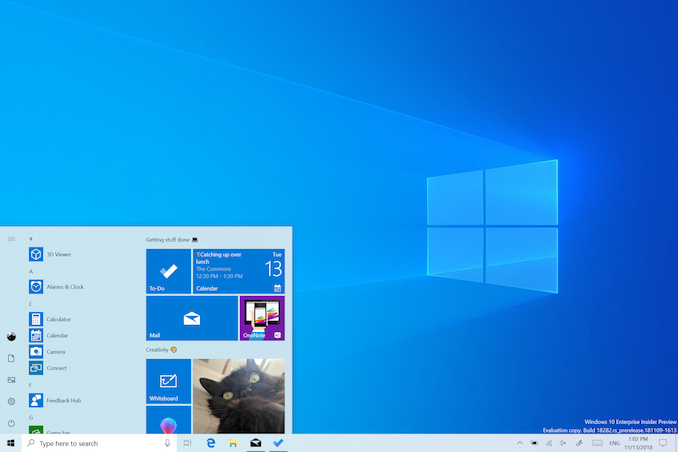
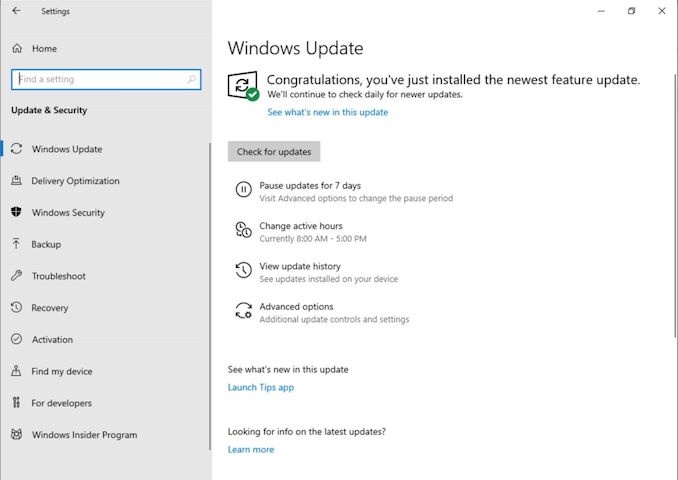
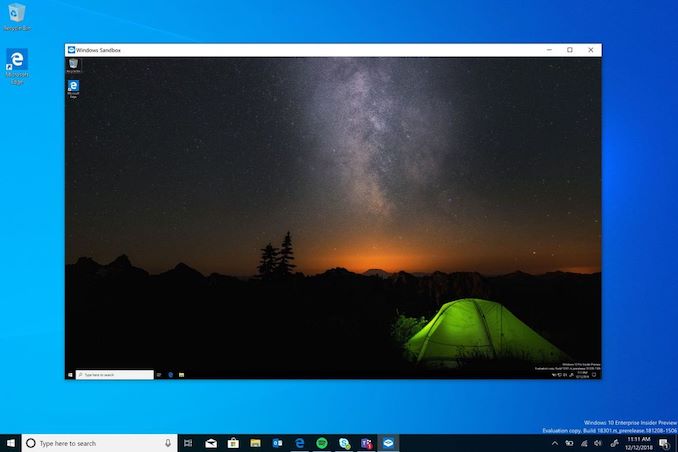

 Quote
Quote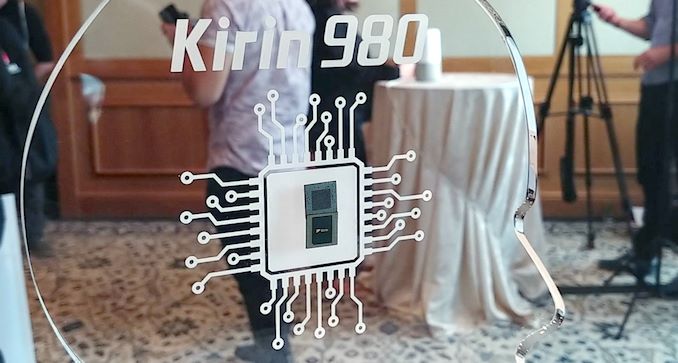
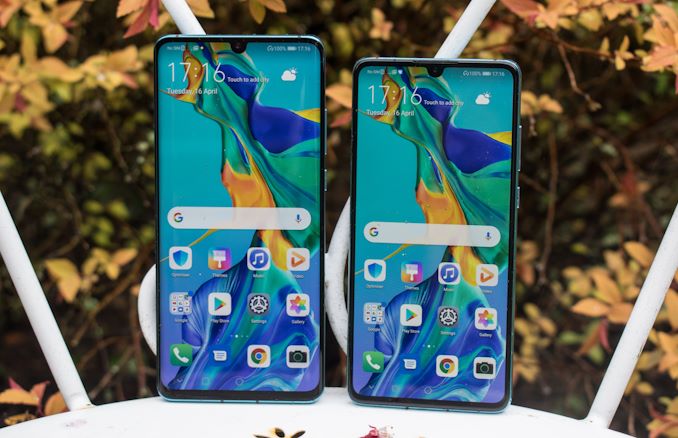
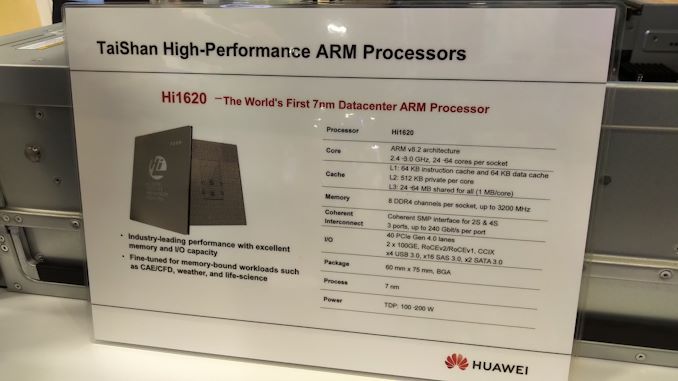
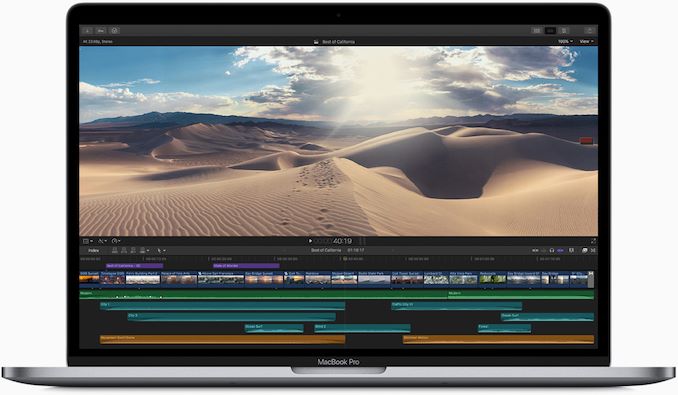
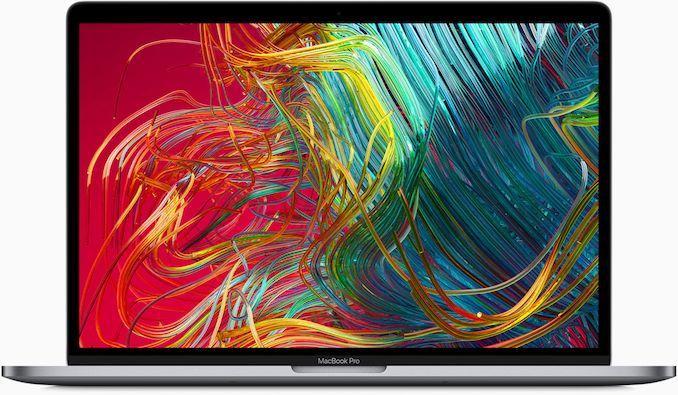

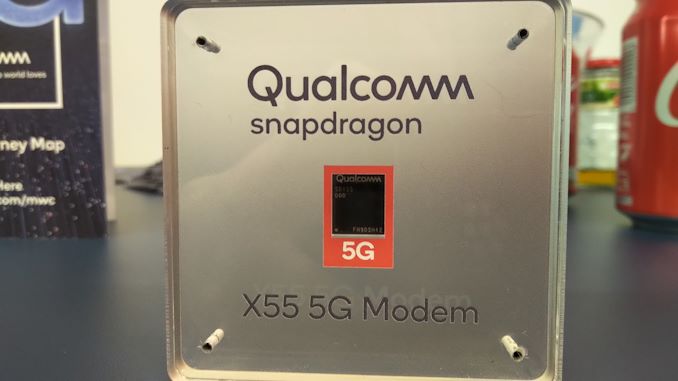
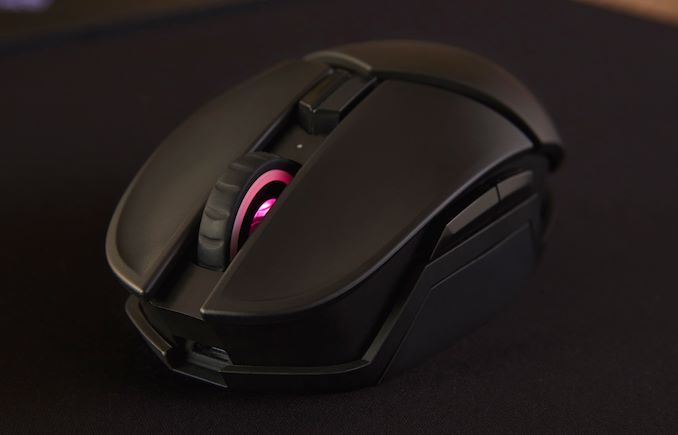
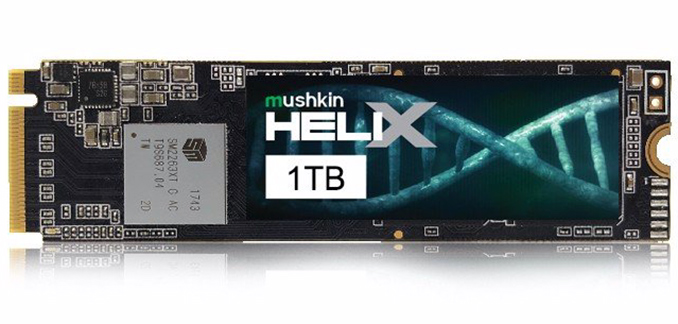
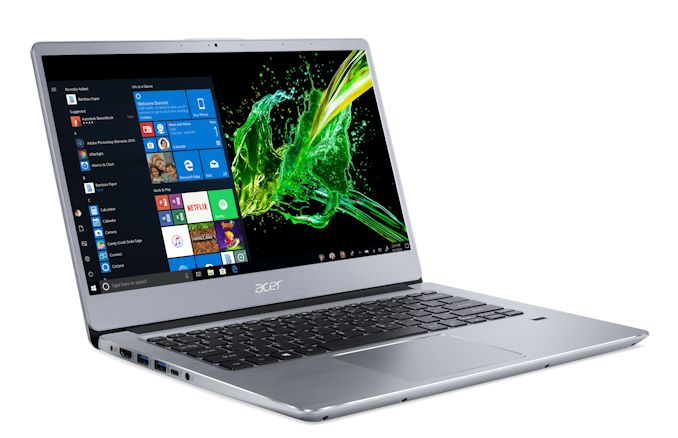
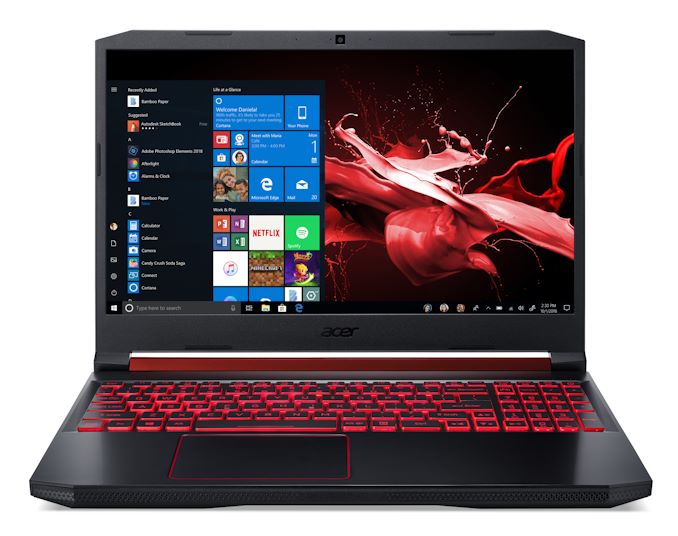
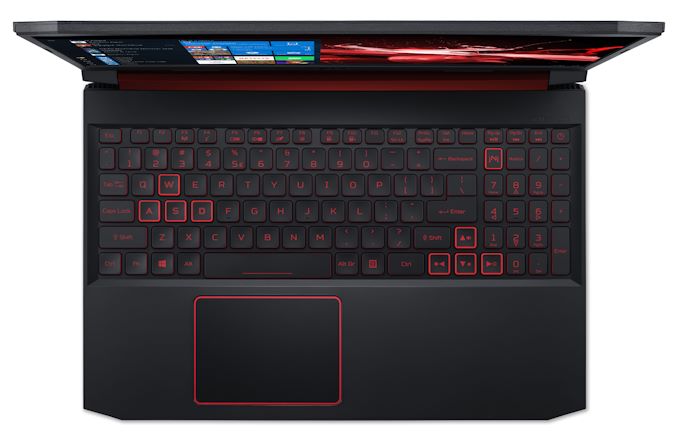
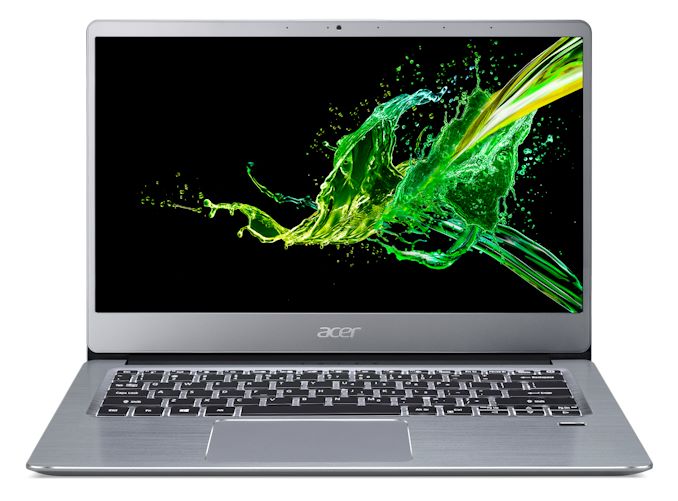

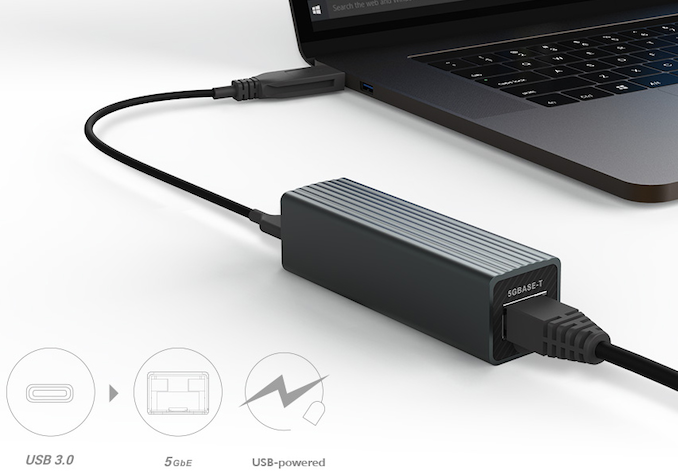
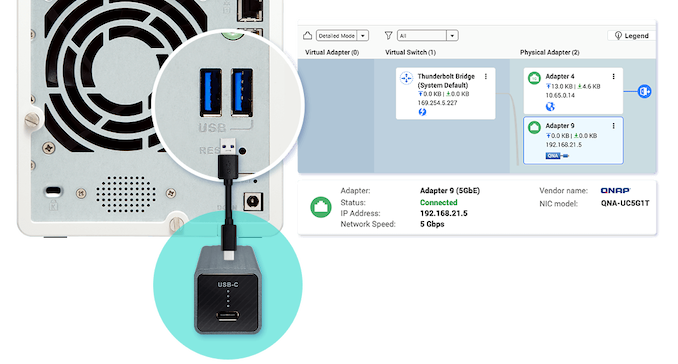
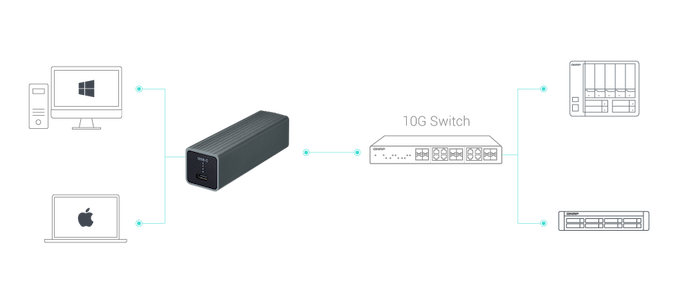
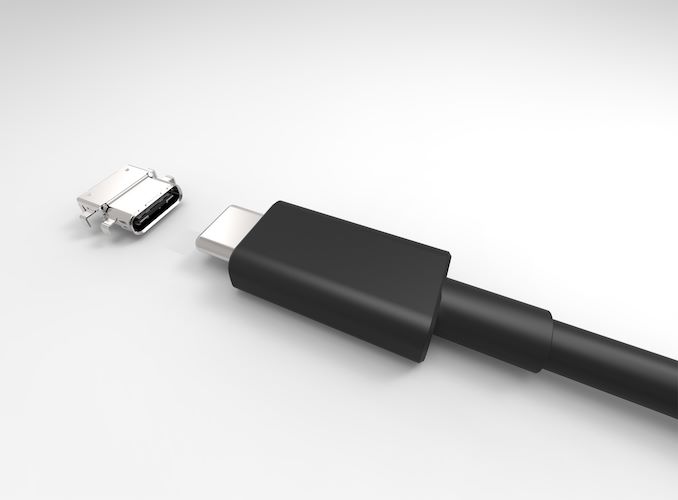
















Bookmarks